#Kyusaku Shimada
Text


Miharu Koshi and Kyusaku Shimada as Marin and Litchi in Tokyo Grand Guignol’s Litchi Hikari Club (1985)
78 notes
·
View notes
Text








Shin Ultraman (2022)
Director - Shinji Higuchi, Cinematography - Osamu Ichikawa & Keizô Suzuki


"The motives of those in power never change."
#scenesandscreens#shin ultraman#shinji higuchi#takumi saitoh#ultraman taro#masami nagasawa#hidetoshi nishijima#daiki arioka#akari hayami#Tetsushi Tanaka#Kyusaku Shimada#koichi yamadera#Koji Yamamoto#kenjiro tsuda#Sōkō Wada#Yutaka Takenouchi#Bin Furuya#Osamu Ichikawa#Keizô Suzuki
66 notes
·
View notes
Text
Recently Viewed - Tokyo: The Last Megalopolis
Above all else, Tokyo: The Last Megalopolis is a triumph of production design. From the intricately detailed miniature models and matte paintings to the elaborate costumes and soundstages to the charming Harryhausen-inspired stop-motion creature effects, every cent of the enormous budget is clearly evident. Hell, even the lighting—the radiant shimmer of sunlight reflecting off the surface of turbulent water, the eerie pale glow of the full moon peering through a blanket of dry ice clouds, the ominous neon glare of supernatural power—is absolutely immaculate.
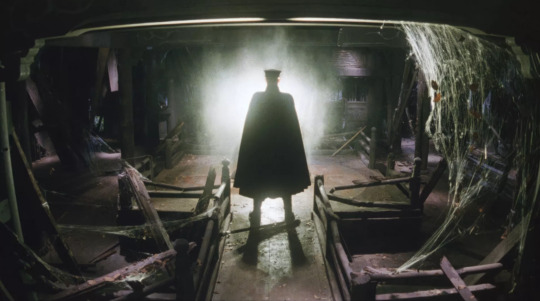
The film’s spectacular imagery perfectly matches its themes, which revolve around the conflict between tradition and modernization. At the dawn of the twentieth century, Japan’s cultural leaders have become increasingly obsessed with urban redevelopment as a means of competing on the world stage. Rich industrialists, for example, propose the erection of towering skyscrapers that rival the gods in stature—ostentatious symbols of material wealth (as well as hubris, considering the country’s frequent earthquakes). Nationalistic, xenophobic militarists, on the other hand, argue for “practicality” over hollow aesthetics—borders, walls, and fortifications have far more strategic value than gaudy architecture. Scientists, meanwhile, prefer technological advancement to politics and commerce, embracing the logistical challenges of constructing a vast subterranean railway system. Those attuned to spiritual matters—monks, mediums, practitioners of geomancy—urge these various parties to exercise caution and moderation in their pursuit of the “future,” warning that such unrestrained expansion risks irrevocably tarnishing the sanctity of the land, thus provoking the wrath of ancestral ghosts and guardian deities. “Progress,” after all, can be a destructive force; occasionally, building something new requires burning down the old. These concerns, however, are dismissed as invalid and irrelevant—as obsolete as magic and mysticism in the era of automobiles, engineering, and electricity.
Despite this compelling premise, the plot is rather jumbled, disjointed, and unfocused. Among the sprawling (and bloated) ensemble cast, no single character ever really emerges as a true “protagonist”; vaguely sketched archetypes are introduced rapidly and vanish just as abruptly, only to reappear at seemingly random intervals. In terms of personality and motivation, they’re nearly indistinguishable; consequently, the audience has little opportunity to form a proper relationship with them. Basically, they’re merely props, existing for the sole purpose of communicating exposition and propelling the story from one set piece to the next—they’re functional, but not terribly memorable.
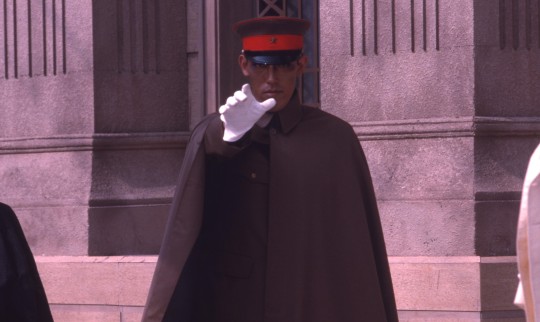
Fortunately, the central villain alleviates this flaw to a significant degree. With his dark, sunken eyes and sharp, almost skeletal facial features, Yasunori Kato is instantly iconic—the epitome of “screen presence.” He exudes menace, personifies malice; every deliciously diabolical line of dialogue that he delivers in his deep, gravelly growl is pure poetry, sending chills of terror down the viewer’s spine. Any scene that excludes him suffers for the omission—though even when he’s absent, his implicit threat still lingers, haunting the frame like a lurking specter, a whispered promise of calamity and impending doom.
Ultimately, director Akio Jissoji’s competent craftsmanship compensates for the movie’s minor formal and structural shortcomings; some mild narrative incoherence notwithstanding, Tokyo: The Last Megalopolis rarely fails to entertain. At the very least, it deserves credit for sheer ambition; precious few blockbusters nowadays dare to be this defiantly audacious and unconventional. Indeed, its superficial blemishes simply make its stylistic virtues more obvious and admirable. Warts and all, it is an essential genre masterpiece, worthy of being ranked alongside such horror classics as The Exorcist, Phantasm, and A Nightmare on Elm Street.
#Tokyo: The Last Megalopolis#Doomed Megalopolis#Doomed: The Last Megalopolis#Teito Monogatari#Yasunori Kato#Japan Society#Japanese film#Japanese cinema#Akio Jissoji#Kyusaku Shimada#film#writing#movie review
3 notes
·
View notes
Text

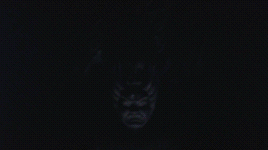








Tokyo: The Last War (1989)
#Tokyo: The Last War#Teito taisen#帝都大戦#horroredit#Takashige Ichise#Kyusaku Shimada#Masaya Kato#Kaho Minami#Tetsuro Tanba#My Stuff
4 notes
·
View notes
Text

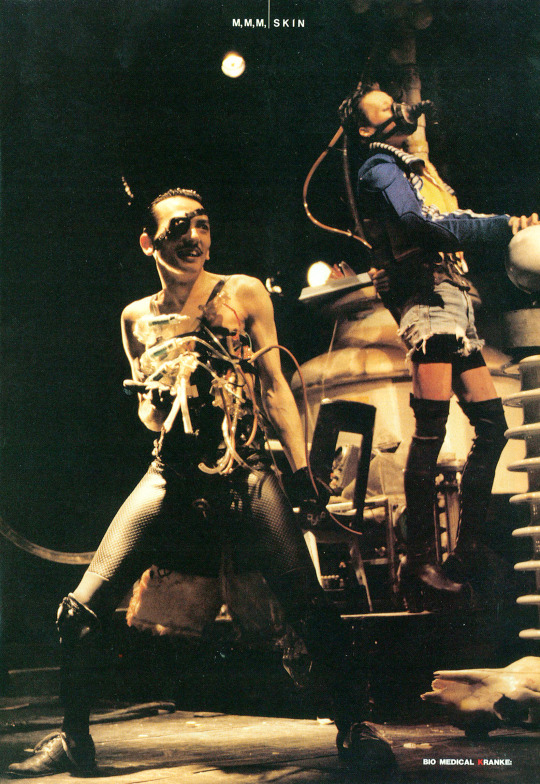


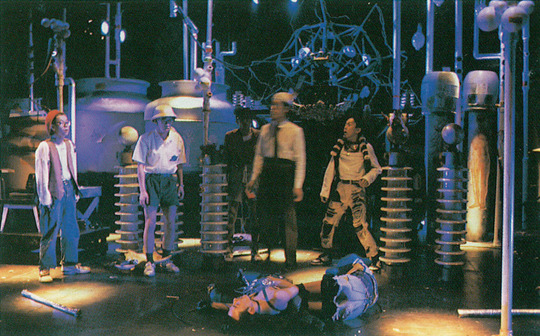

M.M.M. SKIN
演繹ぶっく 1989
#東京グランギニョル #東京グランギニョール #嶋田久作 #飴屋法水 #斉藤聡介 #SKIN #M.M.M #Sosuke Saito #norimizu ameya #Qsaku SHIMADA #kyusaku shimada
#東京グランギニョル#東京グランギニョール#嶋田久作#飴屋法水#斉藤聡介#SKIN#M.M.M#Sosuke Saito#norimizu ameya#Qsaku SHIMADA#kyusaku shimada
48 notes
·
View notes
Text
1955.Kyusaku Shimada Birthday
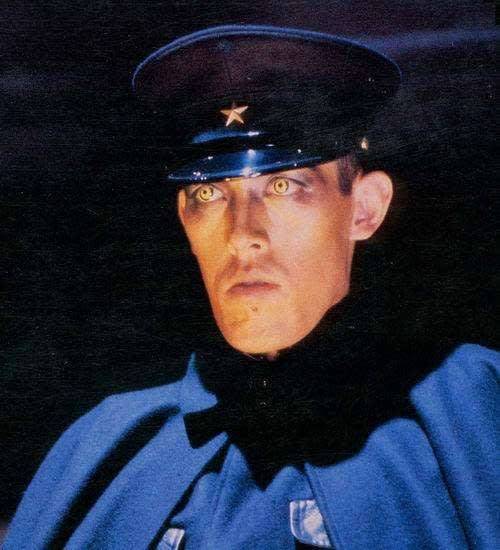
Kyusaku Shimada [嶋田 久作 born April 24, 1955 - ]
1 note
·
View note
Text




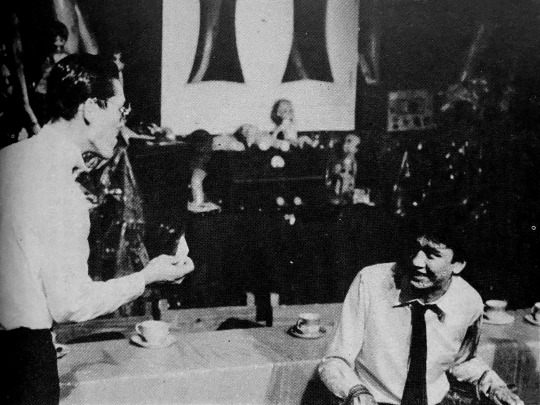


Photos from the Tokyo Grand Guignol stage play Galatia Teito Monogatari, based loosely on the Teito Monogatari serial of epic dark sci fi occult horror books. Despite sharing its basis with a greatly influential series which spawned several films (the first Teito Monogatari adaption even featuring special effects designed by H.R. Giger) and a set of animated horror films, Galatia remains the most obscure of the Tokyo Grand Guignol’s productions. Very sparse information of its contents exist online. On one specific page I found a month back, a (very poorly translated) English synopsis describes the play as being a story about a machine that destroys a major city in Japan. It’s unclear if the machine they’re referring to is in reference to a humanoid robot or a more generalized weapon. It’s said that in the play, Kyusaku Shimada appears as a mad scientist who creates the oxygen destroyer from Godzilla (1954). In a description of the ending, the finale depicts a scenario where the character Yasunori Katō (a demon that manifests itself as an imperial army First Lieutenant) welcomes one of the characters to what he refers to as the “new imperial city”. He reveals to the character a supernatural landscape where various children’s toys and dolls across the stage come to life and move around on their own, all to the sounds of marching drums and claps of thunder. All images were digitized by yours truly, with the sources being volume 28 of Yaso magazine and the Suehiro Maruo-focused magazine Only You, which features a digest version of Galatia’s screenplay. Of course, with the screenplay (or at least a condensed version of it) in my possession, I plan to translate it to English some way or another down the line.
This adaption would help start off Shimada’s professional acting career, with Shimada having his first major cinematic role as Yasunori Katō in the film Tokyo: The Last Megalopolis. As mentioned though, Shimada doesn’t act as Katō in the Tokyo Grand Guignol version. That role was instead designated to Yaguruma Kennosuke, who would later appear as Raizou in the original performances of Lychee Hikari Club.

Yaguruma Kennosuke as Raizou in Lychee's December 1985 performance, apprehending the Marquis de Maruo (performed by Suehiro Maruo) when he enters the Hikari Club's hideout. Kennosuke is on the right side of Maruo, with Hiroyuki Tsunekawa (Zera) standing aside Kennosuke with his bag of lychee fruits.
As a side note, you've gotta appreciate how despite then being well into a Maruo-flavored era of underground culture, there are still the occasional callbacks to Terayama's legacy, hence the clock that Katō is seen holding in the first photo.
#norimizu ameya#tokyo grand guignol#teito monogatari#lychee light club#litchi hikari club#suehiro maruo
332 notes
·
View notes
Text
have you ever wondered why he's called jaibo
well we got the answer today!
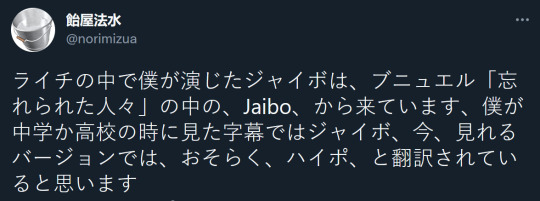
jaibo is named after el jaibo from the young and the damned. that's what this tweet says.
there was another tweet from mr ameya which talks about this movie and i am shingo (which we knew already) being relevant to what the play was like because he tweeted images previously of kyusaku shimada and miharu koshi in the play (i don't know if this is a previously unseen image, considering images of it are pretty hard to find in the first place). hes really popping off with the lore puzzle pieces. thank you mr ameya
- molly ♡
(here)
#litchi hikari club#lychee light club#play stuff by litchi la litchi#waking up and seeing that he had tweeted this morning i just started foaming like a rabid dog#please continue to pop off
51 notes
·
View notes
Link
Links for the last (?) few Mill Creek Ultraman listing are popping up.
0 notes
Photo

帝都物語
東宝出版事業室
監督=実相寺昭雄、原作=荒俣宏、脚本=林海象、出演=嶋田久作・石田純一・原田美枝子・姿晴香・山本清美・佐野史郎・寺泉憲・勝新太郎・坂東玉三郎・平幹二朗 ほか
#帝都物語#akio jissoji#実相寺昭雄#hiroshi aramata#荒俣宏#kyusaku shimada#嶋田久作#anamon#古本屋あなもん#映画パンフレット#movie pamphlet#林海象#石田純一#原田美枝子#姿晴香#山本清美#佐野史郎#寺泉憲#勝新太郎#坂東玉三郎#平幹二朗
109 notes
·
View notes
Photo



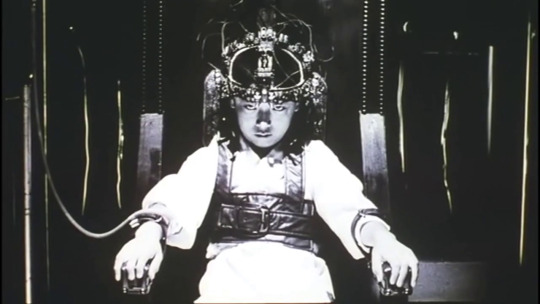


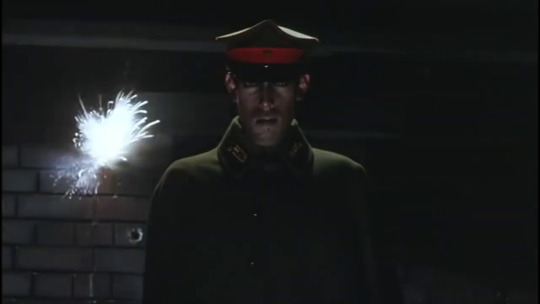



Tokyo: The Last War (1989) 『帝都大戦』
Written by Kaizo Hayashi 林 海象
Directed by Takashige Ichise 一瀬隆重
#Tokyo the last war#帝都大戦#Kaizo Hayashi#林 海象#Takashige Ichise#一瀬隆重#Kyusaku Shimada#嶋田 久作#Kaho Minami#南 果歩#Teito Monogatari#帝都物語#japanese horror#japanese fantasy#j horror#j-horror#japanese movies#japanese film#japanese cinema#japan film club
48 notes
·
View notes
Photo

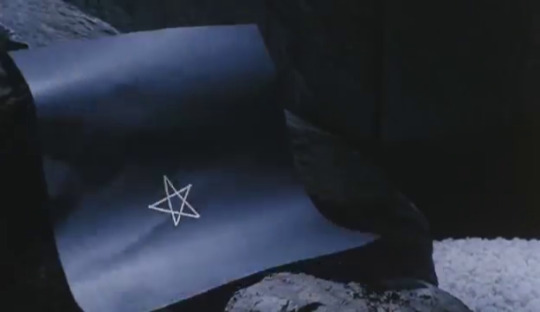
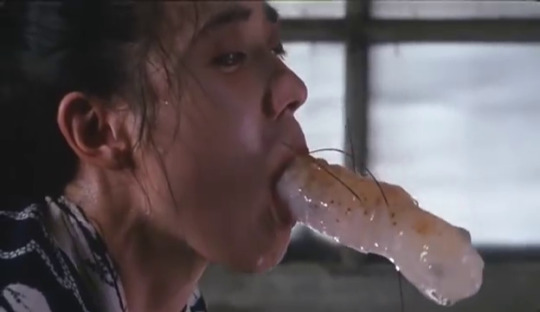
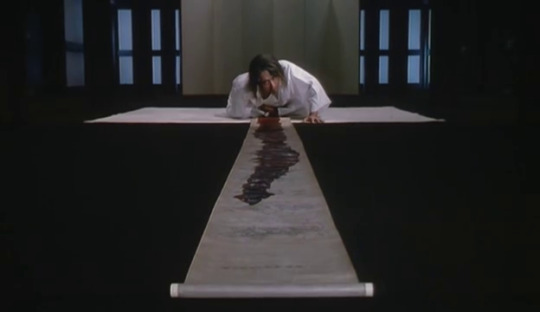
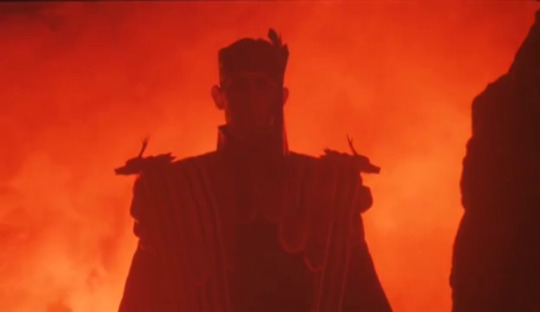

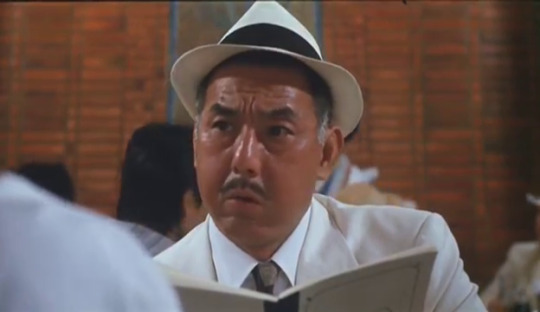
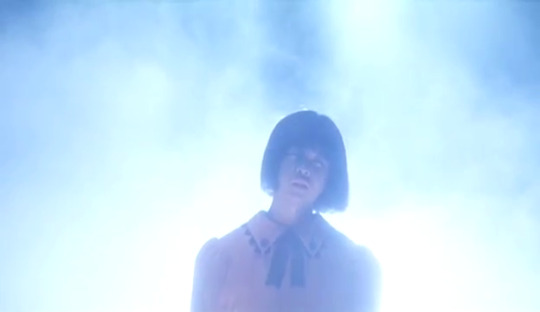
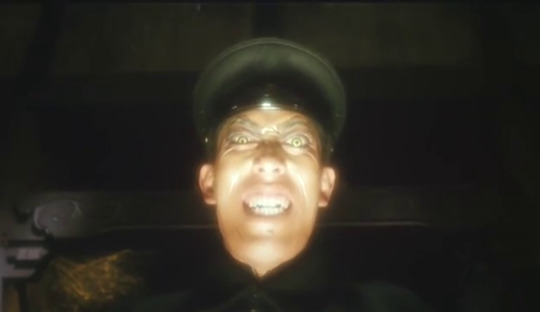

Tokyo: The Last Megalopolis / Teito monogatari (1988, Akio Jissōji)
帝都物語 (実相寺昭雄)
#80s#Japanese#fantasy#science fiction#horror#book adaptation#cult films#tokusatsu#occult#monsters#magic#wagnerian#Tokyo#Joe Shishido#Mieko Harada#Kyusaku Shimada#color#neon#stop motion#period#alternate history#special effects
169 notes
·
View notes
Text
2023: A Year in (Movie) Review(s)
Every cinephile has at least one Holy Grail. It's a common story: interest in said rare movie is piqued by a fleeting allusion in the pages of some neglected reference book or obscure magazine article. Gradually, curiosity evolves into infatuation, then obsession, manifesting as a desperate pursuit that might persist for decades, the search constantly hampered by the tragic fact that the White Whale in question remains stubbornly elusive—either out-of-print or never officially licensed or localized in the first place. And even if it is available (usually through sources of dubious legality), the image quality is always barely a step above an nth generation VHS transfer.
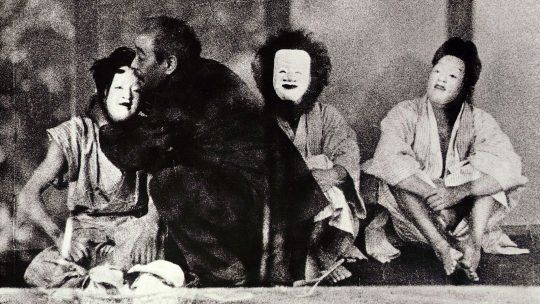
Well, in 2023, I managed to cross five such films off my personal “bucket list”—and despite the year’s numerous challenges (financially, in particular), I think that’s an accomplishment worth celebrating. Thus, in the interest of posterity, I’ve enumerated them below, along with brief descriptions and links to the corresponding reviews I wrote immediately after seeing them:
A Page of Madness: Of all the miraculous discoveries on this list, this one was undoubtedly the most unceremonious and anticlimactic. I randomly stumbled across this silent avant-garde masterpiece (of which I became aware way back in college) while nonchalantly browsing Amazon Prime’s digital library; suddenly, there it was, available to rent for a paltry three dollars. The movie itself was sublime, of course; after spending such a significant chunk of my life hunting it down, however, the relative ease with which I ultimately acquired it couldn’t help but feel a bit… underwhelming.
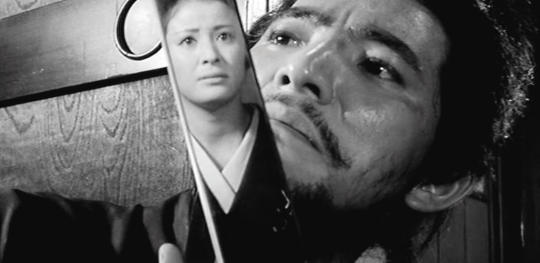
Samurai Wolf: Although Hideo Gosha’s lean, mean chanbara classic has never truly been out of reach to those “in the know,” my own research into the assorted bootlegs and unauthorized foreign imports available via various online marketplaces was… less than encouraging. Fortunately, Film Movement came to the rescue like a chivalrous ronin; the restoration on the company’s Blu-ray release is borderline pristine, enriching the director’s already bold compositions and dynamic camerawork. Nihilism and moral decay have seldom looked so beautiful.
Angel’s Egg: Home video copies of Mamoru Oshii’s surreal animated allegory tend to be obscenely, prohibitively expensive in the West, and tickets for the infrequent repertory screenings generally sell out almost instantly. Thankfully, a recent overabundance of free time afforded me the opportunity to experience the film’s haunting, hallucinatory magic under ideal circumstances—in a theater absolutely packed with fellow fans and aficionados. The Q&A with art director/character designer Yoshitaka Amano that followed the feature presentation (courtesy of Japan Society) was just icing on the cake.

Door: While Banmei Takahashi’s taut, suspenseful, claustrophobic thriller is the latest addition to this list (I learned of its existence roughly a year ago, through out-of-context clips shared between several Twitter accounts), you shouldn’t make the mistake of underestimating my enthusiasm for it—my desire to see it burned with the fiery passion of a spurned admirer. As luck would have it, my thirst was sated rather quickly compared to the previous entries on this countdown; the movie played at this year’s Brooklyn Horror Film Festival—perfectly scheduled to coincide with the Halloween season.
Tokyo: The Last Megalopolis - When I initially encountered this ambitious, extravagant, and extremely expensive special effects extravaganza, the only viable way to view it was in twelve parts on YouTube, compressed to about 240p resolution—a format that hardly does the spectacle justice. Thank goodness for the fine programmers at Japan Society; the big screen really smooths out the movie’s minor flaws and superficial blemishes, and Kyusaku Shimada’s magnificent performance as the nefarious Yasunori Kato certainly benefits from a more expansive frame. Guess I can finally stop requesting the film in the feedback section of literally every post-screening survey…
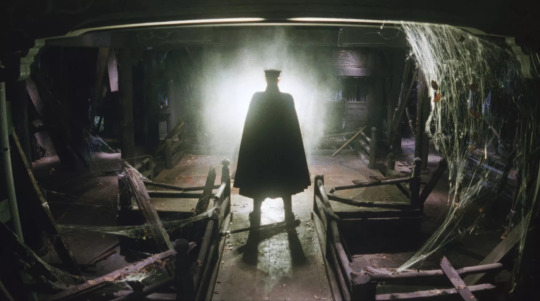
And that essentially sums up my 2023; the satisfaction of enjoying so many films that had been taunting and tantalizing my imagination definitely took the sting out of the whole "prolonged unemployment" situation. With that said, I’d like to wish everybody a very Happy New Year! Hopefully, my adventures in cinema will continue in 2024. (For God’s sake, will some distributor please show Kiyoshi Kurosawa’s Sweet Home the love it so richly deserves?!)
#New Years Eve#Happy New Year#New Years 2024#Goodbye 2023#A Page of Madness#Samurai Wolf#Angel's Egg#Door#Tokyo: The Last Megalopolis#Hideo Gosha#Mamoru Oshii#Yoshitaka Amano#Banmei Takahashi#Japan Society#Brooklyn Horror Film Festival#Japanese cinema#Japanese film#film#writing#list#lists
5 notes
·
View notes
Photo









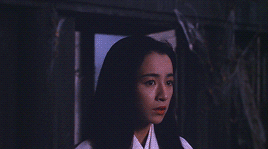
Tokyo: The Last Megalopolis (1988)
#Tokyo: The Last Megalopolis#Teito monogatari#帝都物語#horroredit#Kyusaku Shimada#Mieko Harada#Junichi Ishida#Mikijiro Hira#Ko Nishimura#Akio Jissoji#My Stuff
31 notes
·
View notes
Photo

Sakanaction unveil 80s-inspired Music Video for "Wasurerarenai no"
This week electronic rock band Sakanaction released their long-awaited seventh studio album “834.194“. In order to further promote this record, the quintet have now published the music video for album opener “Wasurerarenai no” to their YouTube channel. This PV, which was directed by frequent collaborator Yusuke Tanaka, attempts to bridge the styles and sounds of […]
Read more on aramajapan.com
0 notes
Text
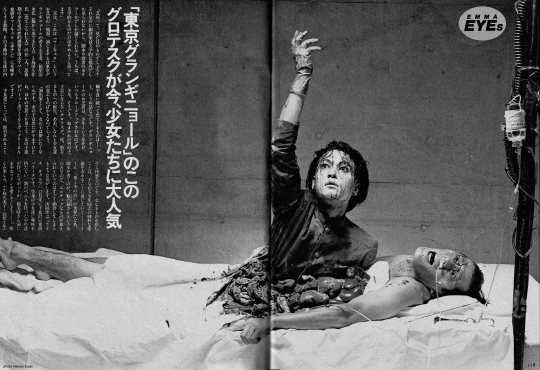
When it comes to books that act as ephemera for the Tokyo Grand Guignol’s plays, most collectors would seek out items like the retrospective 2-MINUS magazine Ameya Style or the volumes of Theater Book and June that featured contemporary articles about the TGG’s plays. The information included in these books is incredibly valuable as many production stills, descriptions and even whole screenplays were printed in these publications. That isn’t to downplay the importance of other adjacent books though, such as the Suehiro Maruo magazine Only You, which features a digest version of Galatia Teito Monogatari’s screenplay. There are even more magazines that have since been shrouded in obscurity, two of which acted as the direct source of several of the most iconic images affiliated with the Tokyo Grand Guignol.
The above image is from the October 25th, 1985 volume of Emma magazine. My knowledge of these publications is pretty much nonexistent outside of the fact that on the auctions I found this (and the next featured book) on, both volumes were listed as “photo magazines” or something like that. They definitely contain pictures, that’s for certain. Either way, this photo was a specially shot production still derived loosely from a scene in the TGG’s first play, Mercuro (1984). Despite the close association, this photo is usually given with the play, there was no scene in the original screenplay where Ameya emerges from Kyusaku Shimada’s torso. It was said on the Twitter account TGG_Lab that this scene was based on a variation of the play that was performed at an event hosted by Peyote Workshop known as End of the Century Live, said version of Mercuro being a loose descendent of the iconic televised performance of the play that was shown on Tokumitsu Kazuo's TV Forum. Both renditions were heavily abridged variants of Mercuro’s most iconic special effects scenes, with the televised version specifically being a crossing of the openings of act one and act two. One thing of note is that near the end of the article on the side, a special teaser is given for the upcoming December 1985 debut of Litchi Hikari Club.
youtube
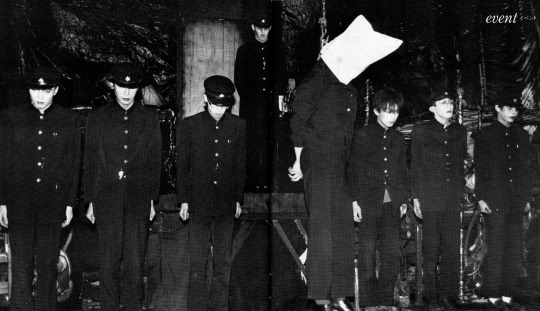
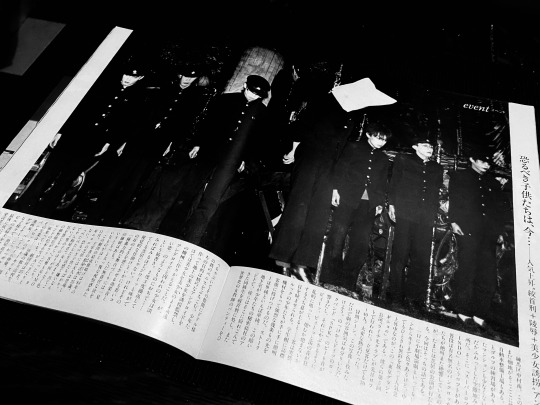

The next photo spread is of a similarly iconic production still, this one being a direct capture of (what was likely) the opening of the first act of Litchi Hikari Club. In said opening scene, an execution is conducted to the tune of the S.P.K. song Culturcide wherein the light club hang a student who crossed their strict rules. This student is apparently different from the one who is blinded by a spotlight later on in the same act. This photo is from the April 11th, 1986 volume of Focus, a magazine that happens to contain a fairly interesting coincidence. In my prior essay regarding the parallels between Litchi Hikari Club and the futurist movement, I mention how Ameya at one point cited an airplane accident as a direct influence for Litchi’s story. According to his recollections, the accident occurred not long after the televised performance of Mercuro, which was in 1985. While I originally had a hunch while writing the essay, I’m fairly certain the airline accident he’s referring to was the Japan Air Lines Flight 123 crash on the 12th of August, 1985. The time frame matches Ameya’s descriptions, and to this day it’s still recalled as being one of the deadliest airline accidents in history. In the same volume of Focus that this image came from, an article is featured a few pages earlier that concerns the accident.
A description of Litchi's opening can be read in this excerpt from a lengthy Twitter thread by user Shoru Toji where she gives an in-depth description of the play's 1986 rerun and the subculture around it:
I saw Litchi Hikari Club on March 27th, 1986, the first day of its rerun, at a live house called Super Loft KINDO. It was a renovated iron factory in the Tokyo Metropolitan area. The place was previously destroyed by Hanatarash with a live set where he went through the space with a bulldozer. If I recall correctly, the hall was illuminated by fluorescent lights from a high ceiling with exposed steel frames. The walls were painted black. The curtain separating the audience seating from the stage was a set of white sheets, like the kind you’d find in a hospital. There was no announcement when the play was ready to begin. Instead, the fluorescent lights suddenly went out, and a set of speakers in the ceiling emitted hissing noises. The stage was dimmed to the opening queue of Culturcide from the Seppuku Dekompositiones EP, and I thought to myself “This is SPK!”. And with the sounds of synchronized stomping and a ringing flute, the curtains were drawn back to show the scene of a line of students marching through the darkness in single file with lights hoisted over their shoulders. The way the lights aligned in their rows reminded me of spotlights.
They marched all about the stage, going right, left, forward and to the back, all at once in an orderly manner. They were taking orders from a man standing on a podium. That man was Tsunekawa in the role of Zera. He stood with an overhead spot bathing him in red light. He pointed in many directions, with the students loyally following each command he made. Eventually, the left side of the stage began to loudly rattle with the starting of a U-shaped quarry conveyor belt. Another student is carted into the stage from the belt, screaming “Please, don’t do it! Please, forgive me!” as he’s suspended upside down from the belt. The light club place their lights in the back of the stage and hang their first victim at the front with a chain.
Sources:
1 - 2 - 3 - 4
73 notes
·
View notes